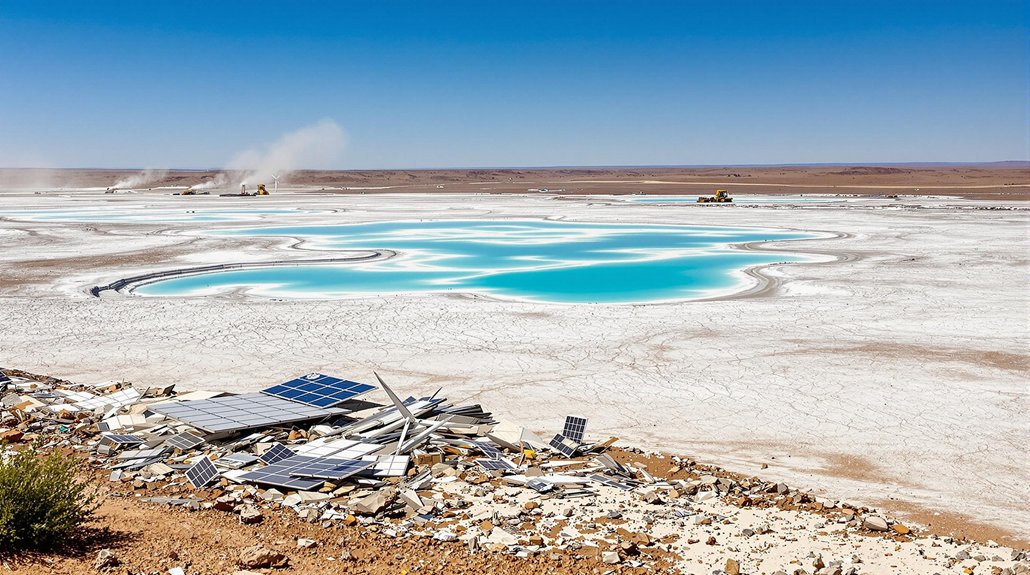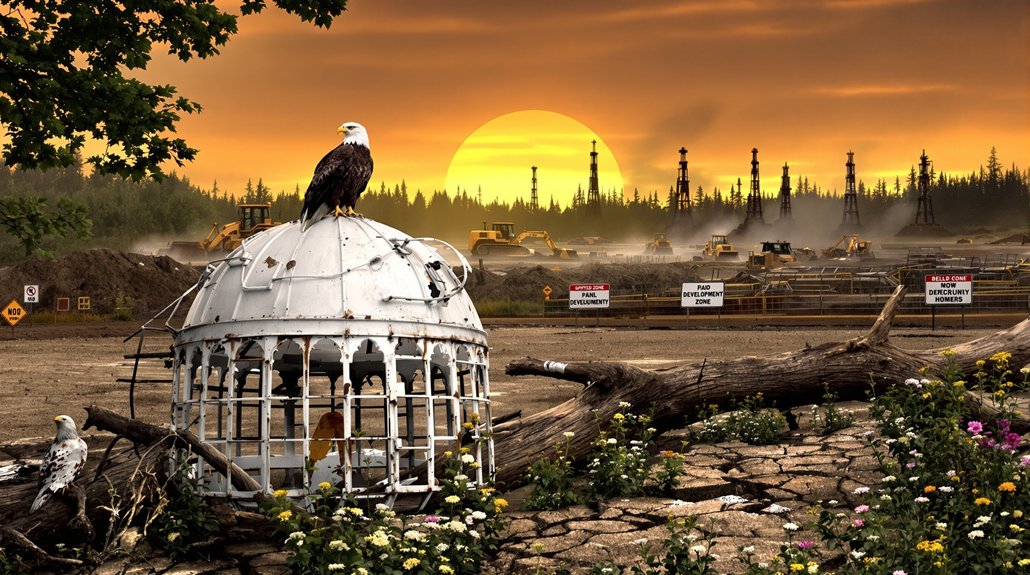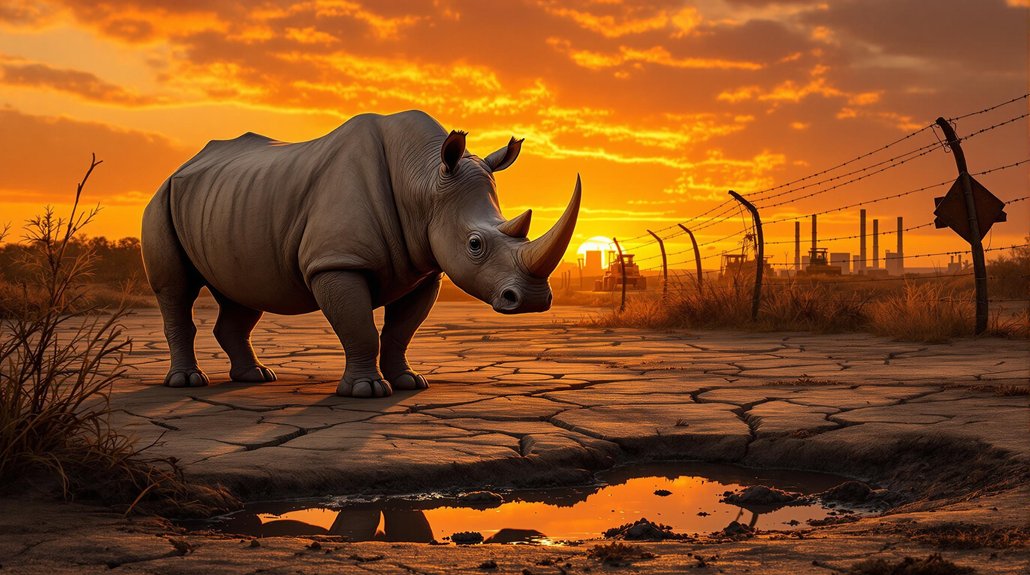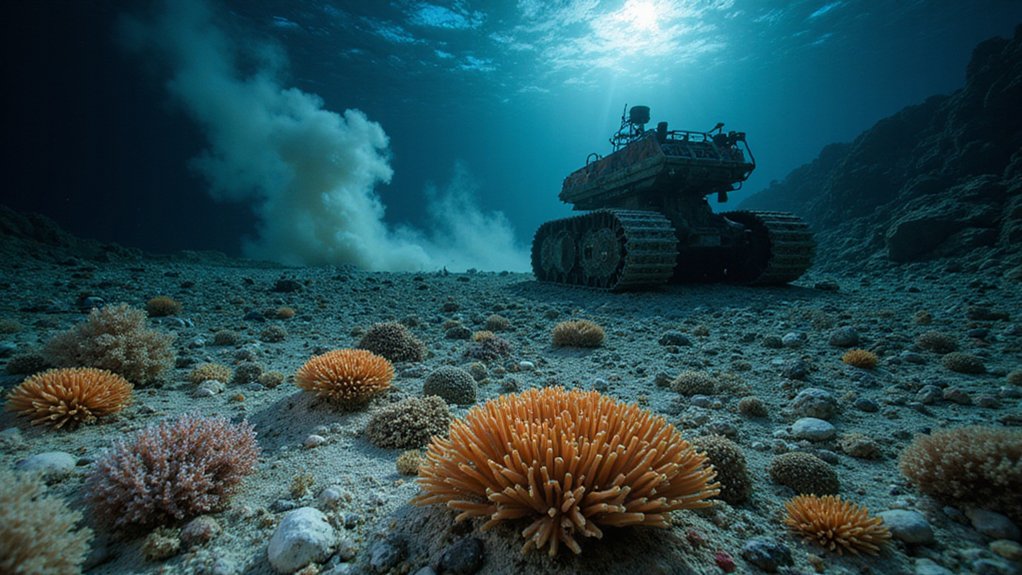Clean energy has a hidden environmental toll. Solar farms destroy habitats while lithium mining for batteries contaminates water supplies. End-of-life waste? Massive. Wind turbine blades rot in landfills, solar panels leach chemicals. Manufacturing these “green” technologies creates significant pollution too. Indigenous communities get displaced, workers endure unsafe conditions, and local ecosystems collapse. The industry’s dirty secrets reveal that “clean” energy comes with its own set of environmental sins.
Why is everyone so quick to praise clean energy as the environmental savior? Look beneath the shiny surface of solar panels and spinning turbines, and you’ll find a reality that’s not so clean after all. Those massive solar farms and wind projects? They’re eating up huge swaths of land, destroying habitats and messing with ecosystems in the process. Animals displaced, migration patterns disrupted. Nature pays the price for our “green” conscience.
Let’s talk about what powers all this clean tech. Batteries need lithium and cobalt – materials that don’t magically appear in your Tesla. They’re ripped from the earth through intensive mining operations that contaminate water supplies and destroy landscapes. Indigenous communities get pushed aside. Sound familiar? It’s the same old extractive model we’ve always used, just with a shiny new “sustainable” label slapped on it.
The green revolution’s dirty secret lies in its supply chain—same extraction, different marketing.
And what happens when these miraculous technologies reach end-of-life? Solar panels pile up in landfills. Wind turbine blades – massive fiberglass monsters – can’t be recycled efficiently. They’re buried or stockpiled instead. So much for reducing waste.
Clean energy isn’t emissions-free either. Manufacturing solar panels creates pollution. Bioenergy can pump out methane. Even hydroelectric dams release greenhouse gases from rotting vegetation. The dirty secret? The production chain remains very much carbon-dependent.
Behind every gleaming renewable project lurks potential human rights abuses. Mining operations for battery materials feature unsafe working conditions. Local communities lose access to land and water. Wind farms are increasingly scrutinized for their devastating impact on bird and bat populations through collisions and air pressure changes. The wealth extracted rarely benefits those most affected by the development.
Grid reliability? That’s another inconvenient truth. The sun doesn’t always shine, the wind doesn’t always blow. This intermittency issue makes renewable sources less reliable than traditional power generation methods. Energy storage remains expensive and technically challenging. Fossil fuel plants are still necessary as backup systems when renewable sources inevitably fail to meet demand.
None of this means we should abandon clean energy pursuits. But the narrative that it’s an environmental panacea? Pure fantasy. Real sustainability requires confronting these uncomfortable realities. The shift to clean energy comes with its own set of environmental and social costs. Costs nobody seems keen to discuss.
References
- https://www.hechayward.com/the-dark-side-of-renewable-energy/
- https://www.altenergymag.com/article/2015/08/the-dark-side-of-renewable-energy-negative-impacts-of-renewables-on-the-environment/20963/
- https://blogs.newschool.edu/milano/2023/01/19/the-dark-side-of-renewable-energies-electric-vehicles-and-lithium-mining-in-chile/
- https://hbr.org/2021/06/the-dark-side-of-solar-power
- https://www.imdb.com/title/tt13524468/








